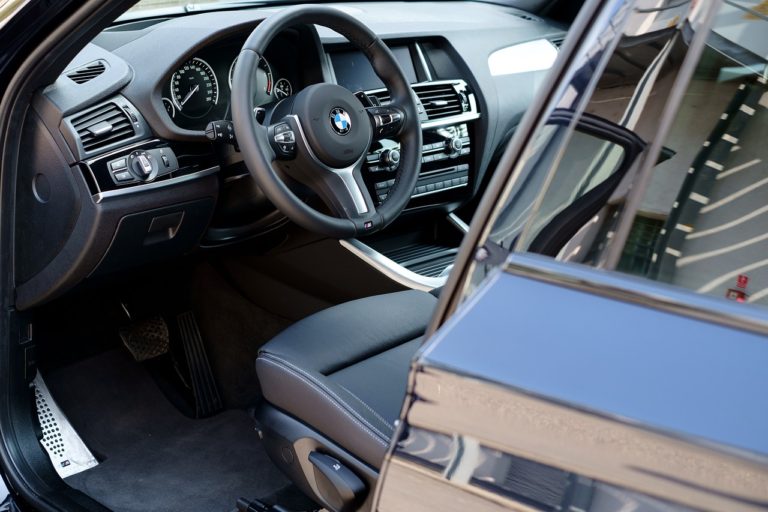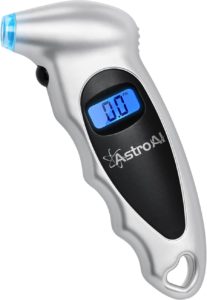What is TPMS?
Tire pressure monitoring (TPM) is like having a personal assistant for your car’s wheels. It’s a system that constantly checks the air pressure in your tires and alerts you if it’s too low or too high. Think of it as a watchful eye that helps you avoid flat tires and improves your car’s fuel efficiency. It’s a small feature that makes a big difference in your driving experience.
How to Reset BMW X3 Tire Pressure Light
2003-2010 (E83) Uses indirect TPMS, does not use individual sensors.
Press the tire pressure warning button once, the yellow TPMS light will appear on the dashboard.
Drive the vehicle.
The TPMS will detect wheel speeds and reset the tire pressure system.
Press and hold the tire pressure warning button to deactivate TPMS temporarily. (this will not calibrate the system)
Drive the vehicle
2010-2017 (F25) Uses Direct TPMS, uses tire pressure sensors
Select VEHICLE INFO from main Idrive menu
Select VEHICLE STATUS
Select RESET
Select RESET again
Drive the vehicle
2017-PRESENT (G01) Uses Direct TPMS, uses tire pressure sensors
Select the MENU button under the shifter
Scroll over and select MY VEHICLE
Select VEHICLE STATUS
Select TIRE/TYRE SETTINGS
Select PERFORM RESET
Drive the vehicle.
Everything in this article is applicable to all BMW X3 versions and models including M competition versions.
How Does the BMW X3 Tire Pressure Monitoring System Work?
The BMW X3’s direct tire pressure monitoring system uses sensors located inside each tire to monitor air pressure levels.
These sensors transmit data to the car’s onboard computer, which displays the tire pressure readings on the dashboard.
If the tire pressure falls below a certain threshold, the system will alert the driver with a warning light and message on the dashboard.
The system also provides real-time updates on tire pressure levels as the car is being driven.
The system can be calibrated to account for different types of tires and driving conditions.
In the event of a tire leak the system will provide an immediate alert to the driver, allowing them to take prompt action to address the issue.
By constantly monitoring tire pressure levels, the system helps ensure optimal performance, fuel efficiency, and safety for the BMW X3.
When Should You Reset the BMW X3 TPMS?
After adjusting tire pressure
After a tire rotation, tire balance, or wheel alignment
After replacing one or more tires
After installing new rims or wheels. TIP: Remember to swap old sensors into new wheels.
If the TPMS warning light stays on after inflating a tire to the correct pressure
After a seasonal tire swap (switching between winter and summer tires)
After any tire or wheel-related service or repair
After replacing the vehicle’s battery
After jump starting a dead battery
If a TPMS sensor is replaced or repaired
Common Causes for Tire Pressure Warning Light to Turn On:
Low tire pressure in one or more tires
A flat tire or slow leak due to puncture or damage to the tire
A crack in one or more rims or wheels. (This is extremely common in all BMW vehicles)
Significant changes in ambient temperature greatly affects tire pressure and is the number one cause of setting off TPMS warning lights!
Dead or dying tire pressure sensor battery
Mismatched tire sizes or types on the vehicle (with indirect TPMS this will cause a warning light)
Vehicle weight overload, to much weight in the vehicle
Malfunctioning, leaking or damaged TPMS sensors
TPMS software or calibration issues
A dead vehicle battery then jumped can cause the TPMS light to come on
What Happens to Underinflated Tires?
Proper tire inflation is crucial for optimal performance of your BMW X3. When tires are underinflated it can result in reduced fuel efficiency, uneven tire tread wear, and compromised handling and braking abilities. These issues can increase the chance of accidents and negatively impact your driving experience with your BMW X3. To ensure your vehicle’s safety and performance it’s essential to maintain appropriate tire pressure. We recommend checking tire pressure monthly and before long trips!
Please note that this blog post contains Amazon affiliate links. This means that if you make a purchase through one of these links, the author of the blog may earn a small commission at no extra cost to you. The author only recommends products that they personally use and believe in. Thank you for supporting this blog.



